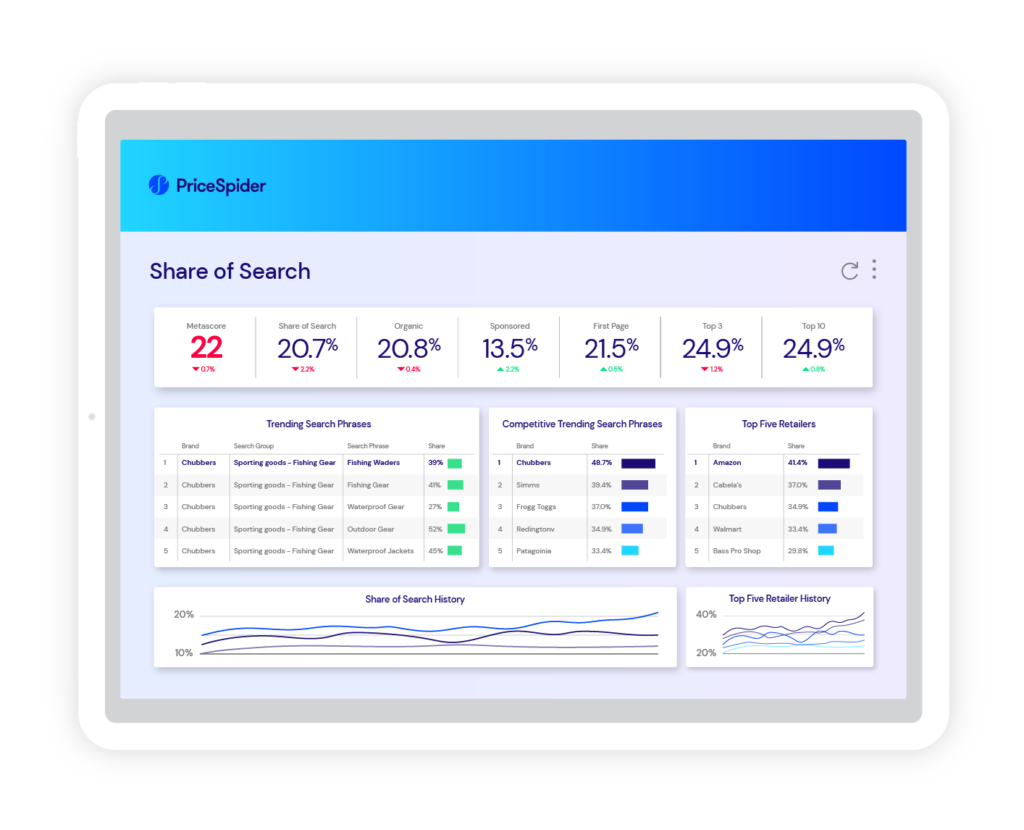Let’s kick off an important lesson about product sales with a story about pantyhose.
When entrepreneur Sara Blakely started her hosiery company, Spanx, she was determined to get her product in front of as many customers as possible. And after landing a deal with Neiman Marcus to put Spanx products in several of their stores, the young business owner was over the moon.
But she quickly realized she had a problem—a visibility problem. The department store was putting Spanx products in the hosiery department, but her target customers were actually shopping in the shoe department and the ready-to-wear department. Not an ideal setup.
So, what did Blakely do? She improvised. She bought envelope racks, took them to Neiman Marcus stores, loaded them up with Spanx, and put them smack-dab in front of the cash registers. In other words, she all but guaranteed that customers would see her company’s products. And it worked. Today, Spanx is valued more than $1 billion.
Retail is highly competitive, and visibility provides a competitive advantage. Brands vie for placement in prime locations within stores because they know they will sell more products as a result.
And the same principle holds true for the digital shelf. Where and how your products appear online will impact how well they sell. But optimizing the digital shelf requires its own unique strategies. You’ll want to consider not only search engine results and your own website, but also customer reviews, your product pages across all digital retailers, and even competitors’ product pages. And you’ll need to be ready to change and adapt your strategy as consumer behavior evolves and as competitors change the digital landscape with their products.
Here are four tips to jumpstart your digital shelf optimization.
1. Track your rankings over time
When people shop for products online, they often head first to their favorite digital retailer to search for whatever it is they’d like to buy. They may be looking for a general category of products, or they may already have a brand name in mind. Either way, you want your product to show up when it’s relevant to that search.
If you’re selling TVs, then you obviously want to rank well when a customer searches for “TV” or when they navigate to the “Electronics” and then “Televisions” categories. But you’ll only know how well you’re doing if you can track where each of your products ranks for every relevant keyword and in every applicable category in every online retailer where your products can be found.
That’s a lot of data.
But this overwhelming amount of data is crucial for fine-tuning your strategies and ensuring that your products always appear where they need to be. Of course, it would be ridiculous to sort through all this search data manually. Thankfully, Brand Monitor’s Share of Search feature gives you a comprehensive look at how your products rank on each retailer’s site based on any keywords and categories you specify.

By tracking these rankings over time, you can build up a graph that serves as a baseline. With that baseline in place, you’ll be able to see exactly what happens when you update your copy, when you tweak your keywords, when you purchase sponsored placement, or when you implement any other new strategy. You’ll know not only how well (or poorly) your effort performs on its own, but how well it compares to the baseline already established.
Additionally, you’ll be able to see what happens when competitors implement new strategies of their own. What new keywords did they use that perform well? What mistakes did they make?
2. Learn from your customers
When you’re shopping and you see that a product has hundreds of ratings and four and a half stars out of five, you probably feel pretty good about it. And when you start reading glowing reviews, you probably feel even better! Simply getting more customer reviews can be a huge digital shelf optimization effort that increases your conversion rate.
But it goes further than that. Many retail sites factor the product’s ratings and reviews into their algorithm for search results. Higher customer ratings often mean higher search rankings and more visibility for your product.
You can also use reviews and Q&A content to learn from your customers. What questions keep coming up? Maybe your customers need to know where the HDMI port is located on those TVs you’re selling. Chances are good you’ll find people asking about that. This can show you where you need to fill in the gaps of your product description with information customers want to know.
Are there any recurring complaints? Maybe there are multiple comments on sluggish performance. That’s something to look at improving in future iterations of your product. And it could even be something you use as a selling point once you do!
Have your customers found a use for your product that you never considered? That may be something you can highlight in your copy. Or you might be able to optimize for keywords based on this alternate use case.
But sorting through large quantities of reviews is tedious work. And while one review by itself may be helpful, it’s as a collective whole that they become most valuable.
Brand Monitor’s ratings and reviews dashboard can help you keep track of all of this, providing you with aggregate ratings and review sentiments from across all retailers, allowing you to filter those ratings, and showing themes and trends over time.
3. Monitor your content
So you’ve been tracking your rankings over time, learning from your customers, and using that data to fine-tune your copy. Great! But you also want to keep your product pages consistent across all your online retailers.
Of course, there’s a difference between having consistent product content and identical product content across channels. Because different retailers use different product page structures, taxonomies, and back-end data (not to mention different customer bases!), you may not be able to use the exact same content on every site.
However, you still need to provide a consistent, unified experience, and you especially need to avoid any discrepancies that could confuse or frustrate your customers. Be on the lookout for two main kinds of inconsistencies: incorrect information and insufficiently distributed information.
To illustrate an example of incorrect information, let’s say you’ve upgraded your TV to have more processing power than last year’s version, but that also makes it a little heavier. You don’t want any product pages still listing the old specs. Not only would you be missing out on a selling point for the upgrade, but you’d risk frustrating users who relied on the incorrectly listed weight to pair their TV with an incompatible wall mount.
As for insufficiently distributed information, perhaps in response to that question about your TV’s HDMI port, you’ve created an image that details the location of every port. But now you need to make sure that image isn’t missing from any individual retailer. As helpful as the graphic may be, it won’t do any good if it isn’t on the product page a customer is viewing.
But with all the different retailers out there, it can be quite a task to keep track of each listing. Hiring people to manually check every site would be prohibitively expensive, and you’d still be faced with the reality of human error.
Brand Monitor’s content compliance tool can help. It automatically crawls every listing of your product, comparing images, copy, and enhanced features against your original ones and easily spots anything that doesn’t match up. It then assigns each seller a content compliance score to let you know at a glance where all of them stand.
You’ll see exactly what’s missing or out of order, so you can take action to fix it.
4. Enforce your pricing policy
Having optimized and monitored your content across all those different retailers, you now come to one of the most important features of the digital shelf: pricing.
Your products’ prices do a lot of heavy lifting. They not only need to ensure sufficient margins for you to make a profit, but they also signal a level of quality to your customers. Everyone knows that “you get what you pay for,” so if your products’ prices are too low, they risk coming across as inferior items—no matter how good the quality may actually be!
But maintaining your prices across different sellers can be tricky.
Ideally, all sellers would work with you as good-faith partners, committed to making your brand look good while they sell your products. But in reality, no seller is going to be as committed to your brand integrity as you. That means sometimes your sellers will get into price wars, and in the scuffle to take each other down, they’ll drag your brand down with them.
When one seller drops the price too low, other sellers tend to follow suit. Even the ones who may prefer to follow your pricing guidelines often feel they have no choice but to keep up with the competition. Many actually have pricing software that matches other sellers automatically.
So it’s important that you set a minimum advertised pricing (MAP) policy for your products. This is a firm lower boundary for the price that sellers are not permitted to go below. And if a seller does violate your MAP policy, you may need to cut off your relationship with that seller to prevent the devaluation of your products.
But to actually enforce your MAP policy, you need to know the moment a pricing violation occurs so you can take immediate action. And you need to know which seller was the first to make a move, as they likely triggered retaliatory price drops from other sellers.
To do this, you need a tool to keep track of your prices across retailers. Once again, Brand Monitor has you covered. With real-time price monitoring, you’ll get an alert the moment a seller changes their price, keeping you informed of any violations. You’ll even be able to see if the in-cart price is different from the listed price. Protecting your price is a crucial component of digital shelf optimization. And without a digital shelf analytics solution like Brand Monitor, it’s nearly impossible.
Optimize your position on the digital shelf
Staying on top of the digital shelf means tracking many different variables across every digital retailer, and that’s too much to do manually. You need a solution to keep up with it automatically. Brand Monitor can do it all for you, providing the insights you need to secure the best position for your products.

